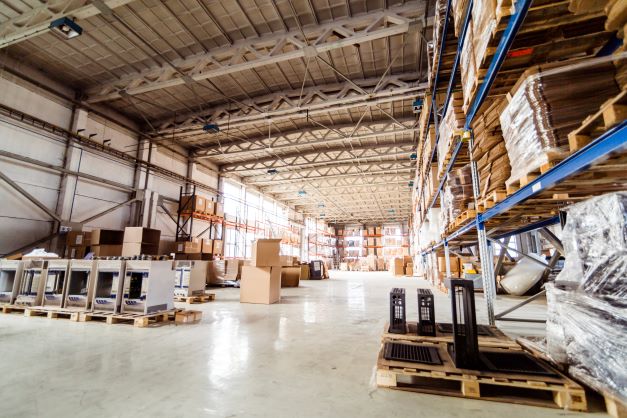Storage is a key element that has to be considered by managers at warehousing complexes or warehousing services. It plays a role in the supply of materials and goods to the market. It can also contribute to how quality at warehouses and logistics centers can be maintained as well as managing and retaining the value of products.
Warehouses utilize various kinds of storage systems and styles based on volume, packaging, and other criteria. Based on the efficiency of such systems, warehousing services or storage can enhance order fulfillment and inventory management processes. Modern storage structures and systems not only enhance the speed and efficiency of operations but can also help to increase the safety of the workplace from unexpected occupational hazards. Some warehousing storage systems used are as follows
-
Pallet Storage System
This is about deploying heavy-duty pallets for stacking several goods and crates. Plastic or wooden pallets are mostly used in logistic centers. This helps to save a lot of space, especially in smaller sizes warehouses. Moreover, pallets can also be mounted on top of one another. This facilitates smoother fork-lifting operations.
-
Storage Cabinet
A common kind of storage management is the storage cabinet technique. Based on the capacity and goods, cabinets can hold large amounts and can be adapted to the types of materials that need to be stored. Storage in cabinets also leads to longer shelf life as the goods are not exposed to external conditions.
-
Static Shelving
Static shelving systems are not very flexible as they are fixed to defined locations within the warehouse. The key benefit that this system has over other storage systems is its stability. The layouts allow other static shelves to be kept at reduced gaps from one another. This helps to optimize space, particularly when manually dealing with light-to-medium inventory.
-
Multi-Tier Racking
The key factor that defines multi-tier racking systems is the large dimensions of the warehouse storage rack. The teams also have the option of storing similar SKUs at one or two levels of the system. They have a higher level of accessibility. Warehouse employees can easily navigate each level as required.
-
Double-Deep Racking
In these systems, two standard-sized pallet racks are positioned back-to-back. This is ideal for handling a high-volume non-perishable inventory where the last in-first out (LIFO) inventory system is primarily used. This also warehouse managers to prioritize SKUs according to their value. Goods that can foster a higher value over longer periods can be safely stored through a double-deep racking method.
The role of technology in Warehousing Storage solutions
Many modern warehouses have incorporated ASRS (automatic storage and retrieval systems) to manage operations. These aid in optimizing inventory flow and floor space. They also minimize the need for human operators while improving safety and efficiency.
These solutions can be designed to store a range of products across the value chain and can be seen in action in warehouses, distribution centers, and large retail formats. They can be utilized for a range of categories such as chemicals pharmaceuticals, foods, and consumer goods. These solutions employ robotics and control systems to handle inventory, shelving, etc. Some technological advancements in place across warehouses include radio frequency identification tracking (RFID), multi-modal Technologies, voice tasking, etc. Such technologies offer warehouse storage ideas that help to improvise and lower costs. Manual inventory count maybe still undertaken for audit auditing process but modern automatic data collection systems have made storage and inventory handling a lot easier.
There are other technologies behind the curtain that are changing the storage and warehouse landscape. Some of them are automation management that enhances warehouse storage and operational agility as well as sensors and scanners that increase operational accuracy. Robots and drones augment speed and safety while reducing operational costs.
How much does warehousing cost? Lowering costs and increasing efficiencies need optimizing warehousing storage systems as per the warehouse’s wants. Some storage systems are fit for warehouses that are mainly holding large SKUs while others drive better utilization of space.
An optimized warehouse storage system can definitely affect the functionality and efficiency of the business. Incorporating such systems can enhance even profitability of the business to a large extent.
To learn more about excellent and reasonably priced warehousing services, go to https://huntandhunt.com/.



